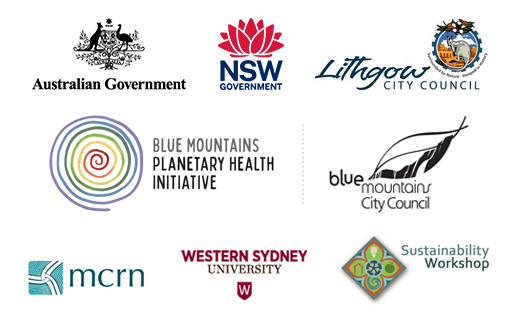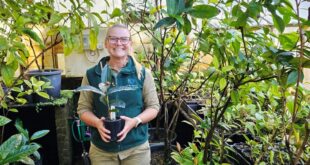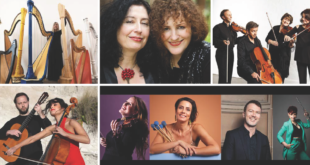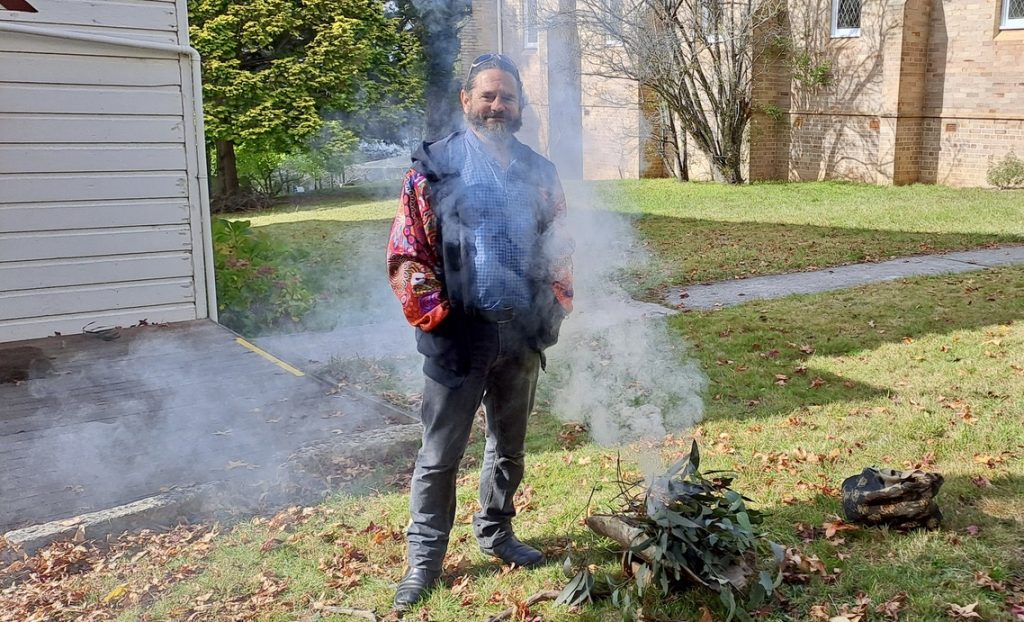
Chris Tobin welcoming people to Country.
Story and photographs by Hamish Dunlop
Hamish Dunlop attends a talk by Dharug man Chris Tobin. Chris’ talk highlights how learning about other people’s cultures and ways of seeing can increase the resilience of individuals and communities.
When I arrive at 125 Wentworth Street in Blackheath, there is a fire in a wooden coolamon, sitting on the grass. On top of glowing embers, is a clutch of green eucalyptus leaves. Smoke is streaming out and drifting across the path where people are entering the hall.
It’s part of a ceremony that welcomes people to Country. Inside the hall, chairs are set up in an oval shape around the outside edges. Chris is unpacking tools and cultural objects and laying them out for everyone to see. Among the items are axes, spears, a coolamon, ochre, boomerangs, possum fur and a shield carved out of stringy bark.

A shield carved out of stringy bark.
Chris introduces himself as a Dharug man, but says he grew up thinking he was white. This is an all-too-common story, where Aboriginality was hidden to avoid the stigma of being identified as Indigenous. But he says that looking through ‘white-coloured glasses’ was not without value: “It enables me to see the dynamics between two very different perspectives.”
This comment reminds me that as a non-indigenous writer, I am limited by my cultural and educational frameworks. Bringing that awareness to how I report on Chris’ talk, I feel a level of discomfort. I think this is healthy. For me it’s a reminder that the ‘white-coloured glasses’ I am wearing can’t be taken off.
Chris explores the importance of understanding different world-views through a discussion of early colonial interpretations of Aboriginal peoples and technologies, particularly how colonialism and individualism have shaped beliefs. He responds to this generously, by sharing his knowledge and perspectives with the wider community through talks, events, publications and media engagements. This generosity reflects how important he thinks it is to appreciate other ways of being in and looking at the world.

Chris Tobin sharing his knowledge with talk atttendees.
Technology by cultural design
Chris tells us that there is a wealth of information due to the journalling practices of colonial government and military officers and the diaries of colonists and convicts but, alas, recorded through British eyes and assumptions of the day. For example, the narrative of Aboriginal cultures and Indigenous tools as ‘primitive’. Through his storytelling, Chris shows us how the British compared the tools and mechanisms needed to maintain their social structures, with the tools and mechanisms of Aboriginal cultures.
It is not surprising that tools adeptly designed in one culture do not translate to another. Chris talks about the hunting of native ducks and the use of different kinds of boomerangs. A returning boomerang above the ducks on the lake imitates a bird of prey. This suppresses the ducks’ flight as they are hunted with spears, other boomerangs and nets. The birds are then prepared by hand. In this setting, guns and game processing factories are unnecessary.
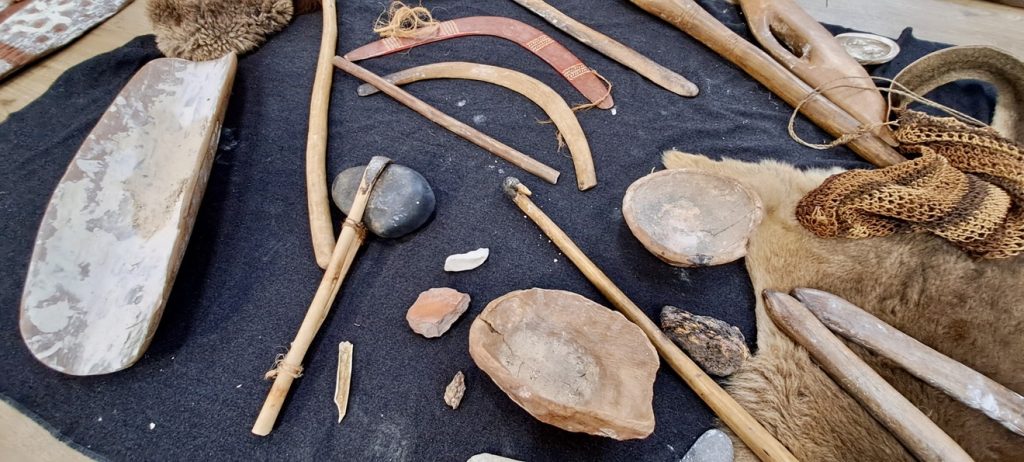
Chris discusses the function and significance of his tools.
The “failure to invent the wheel” was another flawed comparison. Chris describes how the tools he is showing us are designed to be portable, so they meet the needs of traditional cultural practices. By definition, a portable toolkit doesn’t require a way of transporting it beyond human locomotion. This eliminates the need for vehicle wheels. However, Chris says that young men used to cut round sections of bark out of stringy bark trees. “They would roll them along the ground as moving targets for spear throwing practice,” he says. “A clever use of a circular form.”
Values, Country and societal structures
Chris illuminates a complex relationship between values, Country and societal structures. “People built castles in the United Kingdom to protect the wealth and power they had accumulated and to defend themselves from being killed or enslaved. The same thing did not happen here. People understood the benefits of respecting boundaries, which eliminated the need for armies and fortresses. Resources were not coveted in the same way and there wasn’t the separation between government, police and community. There were no fences and no empire building.”
He tells us that colonial attitudes towards land were informed by free-market capitalism. This continues to inform the relationship people have with the land in western cultures. He suggests that looking at Indigenous attitudes to Country can help us see limits of this western view, a shift that is particularly important in the face of climate-related disasters.
“Imagine being born into the land. To be protected by it. To be fed by it. To have a birthright to be held by the land. Compare that to what we have now. We are born with no inherent assets. Other people can buy our land, fence off our land and build castles on it. If we’re able, we can do this to the exclusion of others through no fault of their own. When land is commoditised like this, it’s no wonder we feel separated from it. We don’t see ourselves as part of it, where we need to care for the Country that supports us.”
Some of the people who have come to the talk are interested in Chris’ views about the Voice to Parliament. He says that keeping the discussion and process respectful should be front and centre, regardless of the views people hold. “I’ve seen this country getting a lot better,” he says. “I’m hopeful about that. With respect to the referendum, everyone should make their own decision.”
After the talk Chris and I share a few words. He says, “I pay my respects back to the people who have come. People are inviting us in by facilitating this event, but they’re also inviting us in by coming with an open mind and a desire to listen and ask questions. I’ve talked about lots of things today, but what’s most important is that people have listened with their hearts.”
This story has been produced as part of a Bioregional Collaboration for Planetary Health and is supported by the Disaster Risk Reduction Fund (DRRF). The DRRF is jointly funded by the Australian and New South Wales governments.
